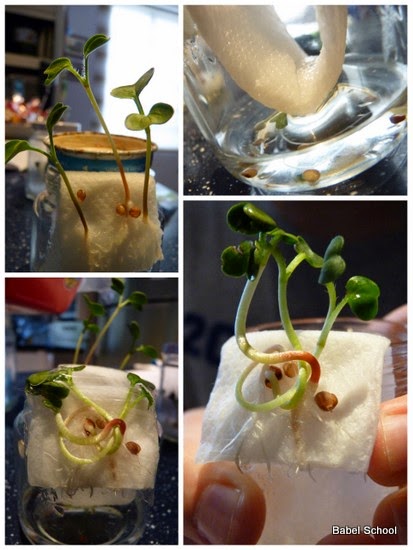DAY 8 - Monday
The only thing we were supposed to do on that day was to go back to the notes from last week and draw a SPROUT GRAPH. Our graph turned out a bit different from the one expected by the authors of the book - our seeds have sprouted much faster and much better (thank you Taiwan for warm and humid weather!).
DAY 9 - TUESDAY
It's time to reuse the box that was used for observation of seeds and sprouts during last week. This time we have to make a hole in the middle of the bottom side and cut off the lid. Then we need to place a paper towel through the hole and set the whole box on top of a jar with water (in a way that the paper towel will be submerged in water).
 |
| Paper towel pushed through a hole on the bottom of the box. |
 |
| The box with paper towel is placed on top of a jar with water. |
 |
| Inside the box we placed another piece of paper towel, with circles labeled as above, plus 4 new radish seeds. |
 |
| Everything needed to be watered and the box covered with plastic foil. |
DAY 10 - Wednesday
Today we finished two of the earier experiments - "Four Environments" and "Day and Night".
We moved all the sprouts used in these experiments to our newly prepared greenhouse-box.
 |
| The sprouts from the dark (top) and light (left and bottom) jars. |
 |
| Sprouts from Four Environments experiment - - cool+wet (top left), very wet (top right), warm+wet (bottom), dry (not shown, because there was no change to the seeds). |
Sprouts were moved to the labeled circles in the greenhouse-box:
And now we have to wait to see what happens, which sprouts will grow the fastest and strongest.
To continue reading about our radishes, please go to part 4.
To continue reading about our radishes, please go to part 4.






Comments
Post a Comment